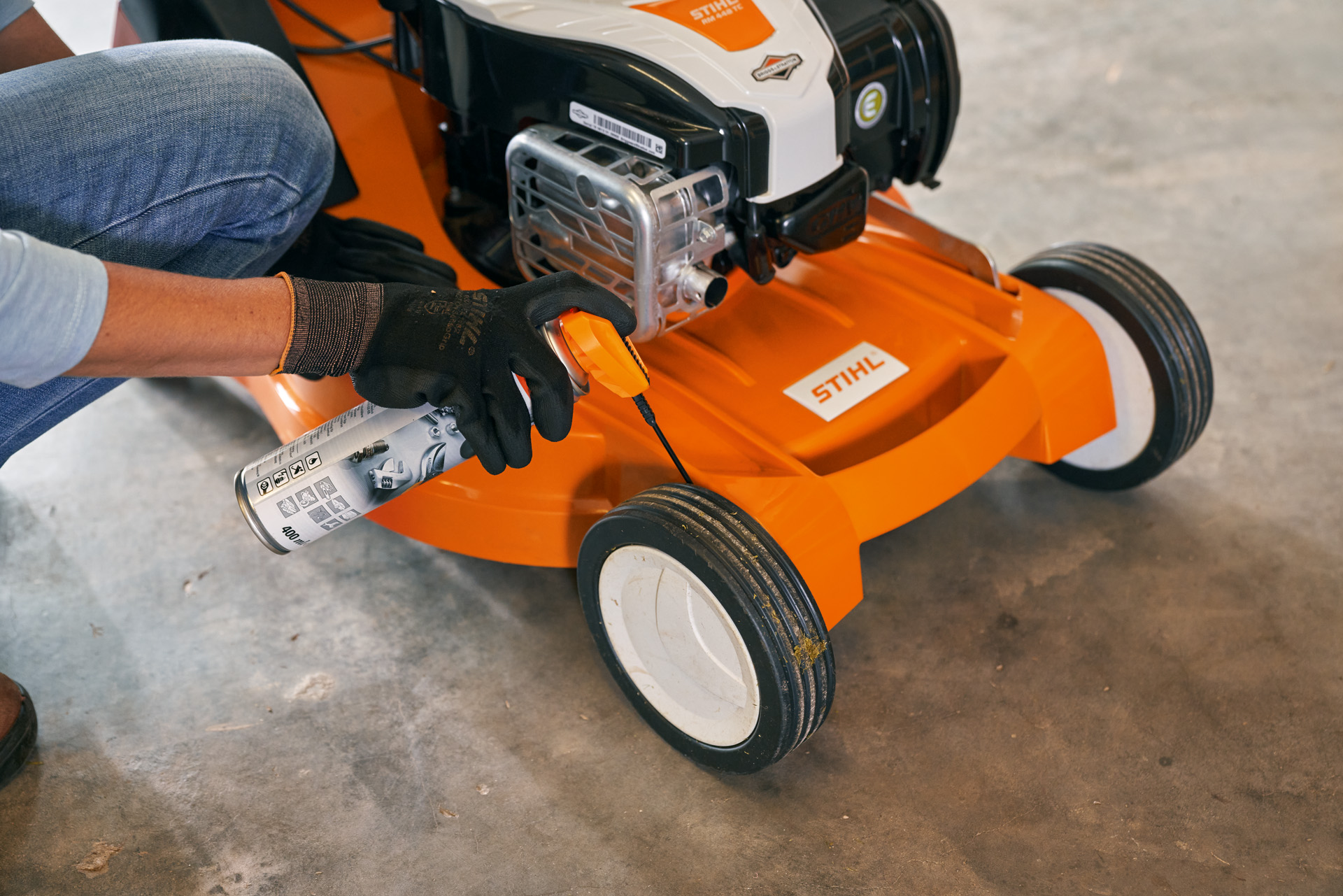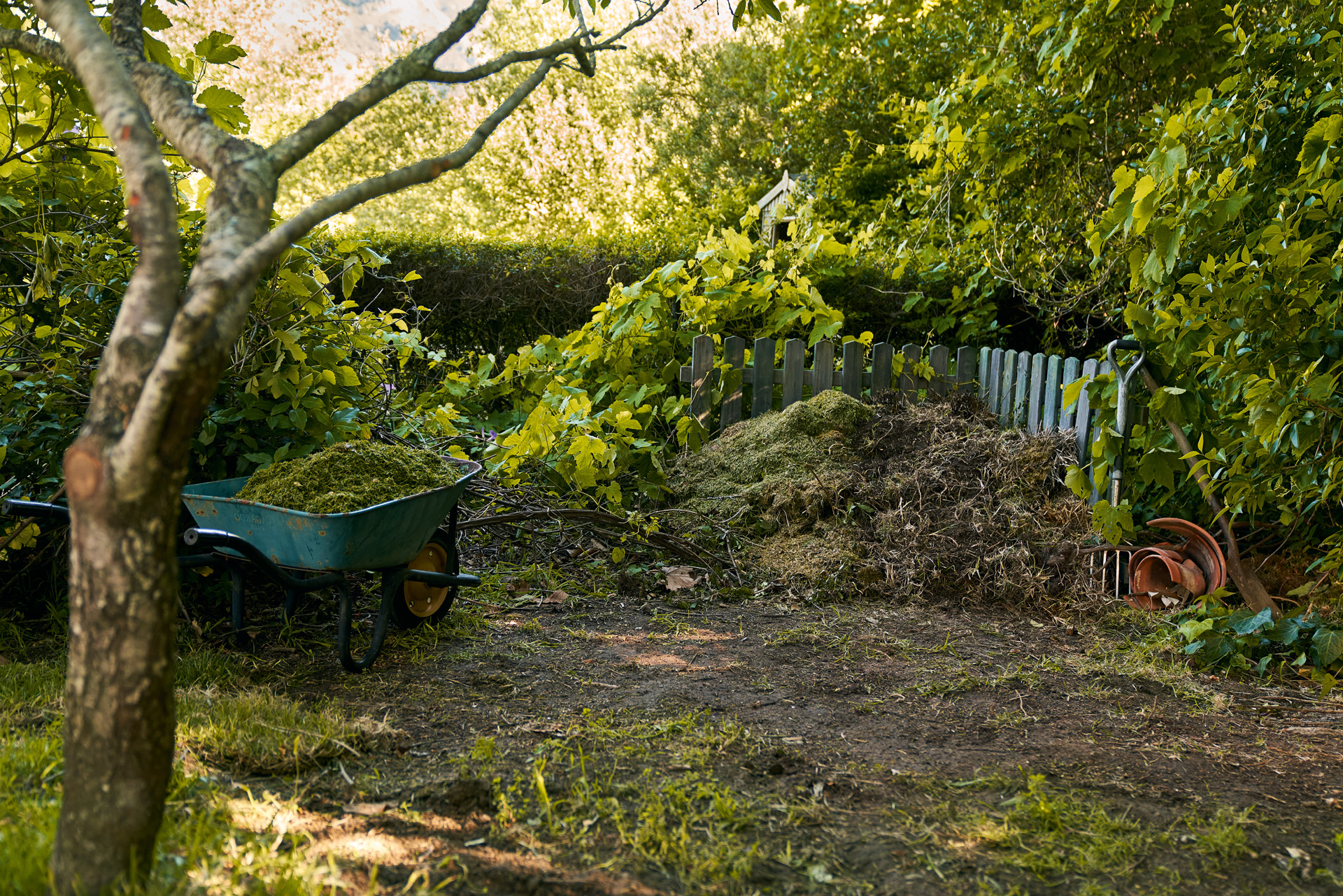Lawn care in autumn
Your lawn needs special care to get through the colder months. We give you the key information you need to look after your lawn in autumn.
15.05.2023

Clearing the lawn before winter
Your lawn is already naturally equipped to get through the cold season. However, with a proper autumn lawn care routine, you can avoid being caught off guard by major or minor damage once spring comes around again. The most important thing to do is properly clear your lawn before winter sets in.
Remove autumn leaves
Remove any fallen leaves and twigs as the first step for autumn lawn care. This prevents cold-season mould and fungus that can develop in damp conditions. If the lawn is left covered in autumn, oxygen cannot circulate, making it vulnerable to pests and disease.
Lawn care tip: You can use your lawn mower to help you if you don’t want to rake the leaves by hand – fit it with a collection box first, then set it to a high cutting setting and run the mower over the fallen leaves. It’s easiest to collect them when they are not too thick on the ground and they are dry. You should clear leaves from your garden by mid-November at the latest and ideally when the sun is shining.

The last cut of the year
One lawn care tip is that grass should be cut short with the last mowing of the year. Around 5cm is ideal. This prevents the plants from being crushed under the weight of any snowfall and reduces the risk of fungus taking hold. One exception is shady areas of lawn, which should be left a little longer (around 9cm) before the cold season. We recommend you use a lawn mower with a collection box for the last cut, as it's important to remove the clippings so they don't smother the surface of your lawn once the temperature drops.
WHEN SHOULD I MOW THE LAWN IN AUTUMN?
You should plan to mow the lawn before the first frost, though take care not to do it too early, as a few days of nice weather will stimulate more growth. A dry day some time between the end of October and mid-November is ideal. The drier the lawn, the easier this last step will be to complete.
When to mow at the end of the season:
- Before the first frost
- On a dry day
- When it’s cloudy

Give your lawn mower a winter inspection
Your autumn garden care schedule should also include time to winterise your lawn mower. Empty the tank, check the oil level and carefully clean all machine parts. Sharpen the cutting blade and store your lawn mower somewhere dry until it is time to put it back to work.

When should I scarify my lawn in autumn?
As the nights get colder and the days shorter, it’s not a good idea to include scarifying in your lawn care schedule. If you want to address a moss problem, it’s better to wait for the mild temperatures next spring: the ideal time to scarify your lawn is between April and May or late August and September, depending on the weather conditions. Ideally, the soil should be warm and air temperatures above 10°C.

Replenishing nutrients: applying autumn lawn feed
Feeding is an essential part of lawn care, and the autumn feed plays a special role because a final fertilisation gives your lawn a dose of nutrients that helps it get through the cold season. However, conventional lawn fertiliser is too nitrogen-rich to use for autumn lawn treatment: nitrogen promotes growth, which would make the grass particularly vulnerable in cold conditions.
SPECIAL AUTUMN LAWN FERTILISER
Opt for special fertilisers for your autumn lawn care routine that will prepare your lawn for the low temperatures, frost, and moist air that come with the coldest months. Potassium is an important part of the fertiliser mix, as it helps your lawn resist frost and disease. The potassium in the fertiliser gets into the cell fluid and lowers the freezing point of the grass cells, increasing the plant’s hardiness against frost. Potassium also has a beneficial effect on the metabolism of the grass. So by next year, you'll have a magnificent green carpet of turf to enjoy.
Autumn lawn care: when should I apply lawn feed?
If you’ve done the last mowing of the year and still feel full of energy, keep going with the autumn lawn care, as it’s a great time to fertilise the lawn. A fertiliser spreader makes life easier and helps scatter the nutrients evenly over the entire lawn.
As a rule, autumn lawn feed should be applied before the first ground frost and after mowing at the end of the season. As soon as temperatures are consistently cooler – from mid-October to the start of November – it’s time to prepare your lawn for rest with a specially formulated autumn fertiliser. The lawn’s metabolism naturally pauses between 10°C and 5°C, so you should look at the previous year’s temperatures to gauge the best time. If it was consistently below 10°C to 5°C from mid-November, you should be fertilising from early October.

Repairing damage: overseeding for new growth
Early autumn is also the ideal time to sow seeds for new grass; use the last few warm weeks, so the lawn has a chance to recover. Give it some extra care first by liberally watering scorched and damaged areas to rinse away built-up salts. You can loosen the ground or lay down some fresh soil, then sprinkle seed over the affected areas. Last but not least, cover everything with potting soil, and keep the lawn generously watered until the seeds germinate.
It’s ideal to make sowing grass seed part of your September lawn care activity, as the soil is still warm, and there is usually enough rain. If seeds are sown too late, there is a risk that the delicate new blades will fall victim to frost.

Summary: Lawn care in autumn
- Remove leaves and branches from the lawn.
- Keep mowing your lawn while it is growing.
- Do the last mow of the year once temperatures start regularly falling below 10°C to 5°C.
- In autumn, cut your grass to a height of 5 cm or 9 cm for shady lawns.
- If you have a lot of moss, scarify in September at the latest.
- For the last autumn lawn feed, apply a specialist fertiliser that contains potassium.
- If you wish, you can overseed for new grass in September.


